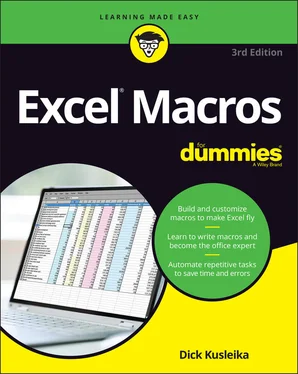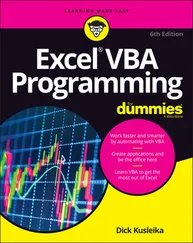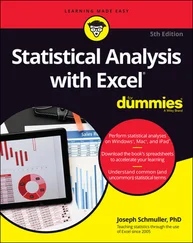1 iii
2 iv
3 1
4 2
5 3
6 4
7 5
8 7
9 8
10 9
11 10
12 11
13 12
14 13
15 14
16 15
17 16
18 17
19 18
20 19
21 20
22 21
23 22
24 23
25 24
26 25
27 26
28 27
29 28
30 29
31 30
32 31
33 32
34 33
35 34
36 35
37 36
38 37
39 38
40 39
41 40
42 41
43 42
44 43
45 44
46 45
47 46
48 47
49 48
50 49
51 50
52 51
53 52
54 53
55 54
56 55
57 57
58 58
59 59
60 60
61 61
62 62
63 63
64 64
65 65
66 66
67 67
68 68
69 69
70 70
71 71
72 72
73 73
74 74
75 75
76 76
77 77
78 78
79 79
80 80
81 81
82 82
83 83
84 84
85 85
86 86
87 87
88 88
89 89
90 90
91 91
92 92
93 93
94 94
95 95
96 96
97 97
98 98
99 99
100 100
101 101
102 102
103 103
104 104
105 105
106 107
107 108
108 109
109 110
110 111
111 112
112 113
113 114
114 115
115 116
116 117
117 118
118 119
119 120
120 121
121 122
122 123
123 124
124 125
125 126
126 127
127 128
128 129
129 130
130 131
131 132
132 133
133 134
134 135
135 136
136 137
137 138
138 139
139 140
140 141
141 142
142 143
143 144
144 145
145 146
146 147
147 148
148 149
149 150
150 151
151 152
152 153
153 154
154 155
155 156
156 157
157 158
158 159
159 160
160 161
161 162
162 163
163 164
164 165
165 166
166 167
167 168
168 169
169 170
170 171
171 172
172 173
173 174
174 175
175 176
176 177
177 178
178 179
179 180
180 181
181 182
182 183
183 184
184 185
185 186
186 187
187 188
188 189
189 190
190 191
191 192
192 193
193 194
194 195
195 196
196 197
197 199
198 200
199 201
200 202
201 203
202 204
203 205
204 206
205 207
206 208
207 209
208 210
209 211
210 212
211 213
212 214
213 215
214 217
215 218
216 219
217 220
218 221
219 222
220 223
221 224
222 225
223 226
224 227
225 228
226 229
227 230
228 231
229 232
230 233
231 234
232 235
233 236
234 237
235 238
236 239
237 240
238 241
239 242
240 243
241 244
242 245
243 246
244 247
245 248
246 249
247 250
248 251
249 252
250 253
251 254
252 255
253 256
254 257
255 258
256 259
257 260
258 261
259 263
260 264
261 265
262 266
263 267
264 268
265 269
266 270
267 271
268 272
269 273
270 274
271 275
272 276
273 277
274 278
275 283
276 284
277 286
278 287
In its broadest sense, a macro is a sequence of instructions that automates some aspect of Excel so that you can work more efficiently and with fewer errors. You might create a macro, for example, to format and print a month-end sales report. After you develop the macro, you can execute it to perform many time-consuming procedures automatically.
Macros are written in VBA, which stands for Visual Basic for Applications. VBA is a programming language developed by Microsoft and a tool used to develop programs that control Excel.
Excel programming terminology can be a bit confusing. For example, VBA is a programming language but also serves as a macro language. What do you call something written in VBA and executed in Excel? Is it a macro or is it a program? Excel’s Help system often refers to VBA procedures as macros, so this is the terminology used in this book.
You also see the term automate throughout this book. This word means that a series of steps are completed automatically. For example, if you write a macro that adds color to some cells, prints the worksheet, and then removes the color, you have automated those three steps.
You’re probably aware that people use Excel for thousands of different tasks. Here are just a few examples:
Keeping lists of things, such as customer names and transactions
Budgeting and forecasting
Analyzing scientific data
Creating invoices and other forms
Developing charts from data
The list could go on and on. The point is simply that Excel is used for a wide variety of tasks, and everyone reading this book has different needs and expectations regarding Excel. One thing most readers have in common, however, is the need to automate some aspect of Excel, which is what macros (and this book) are all about.
This book approaches the topic of Excel macros with the recognition that programming VBA takes time and practice — time that you may not have right now. In fact, many analysts don’t have the luxury of taking a few weeks to become expert at VBA. So instead of the same general overview of VBA topics, this book provides some of the most commonly used real-world Excel macros.
Each section in the book outlines a common problem and provides an Excel macro to solve the problem — along with a detailed explanation of how the macro works and where to use it.
Each section presents the following:
The problem
The macro solution
How the macro works
After reading each section, you'll be able to
Immediately implement the required Excel macro
Understand how the macro works
Reuse the macro in other workbooks or with other macros
The macros in this book are designed to get you up and running with VBA in the quickest way possible. Each macro tackles a common task that benefits from automation. The idea here is to learn through application. This book is designed so that you can implement the macro while getting a clear understanding of what the macro does and how it works.
I make three assumptions about you as the reader:
You've installed Microsoft Excel.
You have some familiarity with the basic concepts of data analysis, such as working with tables, aggregating data, creating formulas, referencing cells, filtering, and sorting.
You have an Internet connection so you can download the sample files.
 Tip icons cover tricks or techniques related to the current discussion.
Tip icons cover tricks or techniques related to the current discussion.
 Remember icons indicate notes or asides that are important to keep in mind.
Remember icons indicate notes or asides that are important to keep in mind.
 Warning icons hold critical information about pitfalls you will want to avoid.
Warning icons hold critical information about pitfalls you will want to avoid.
Читать дальше

 Tip icons cover tricks or techniques related to the current discussion.
Tip icons cover tricks or techniques related to the current discussion. Remember icons indicate notes or asides that are important to keep in mind.
Remember icons indicate notes or asides that are important to keep in mind. Warning icons hold critical information about pitfalls you will want to avoid.
Warning icons hold critical information about pitfalls you will want to avoid.










